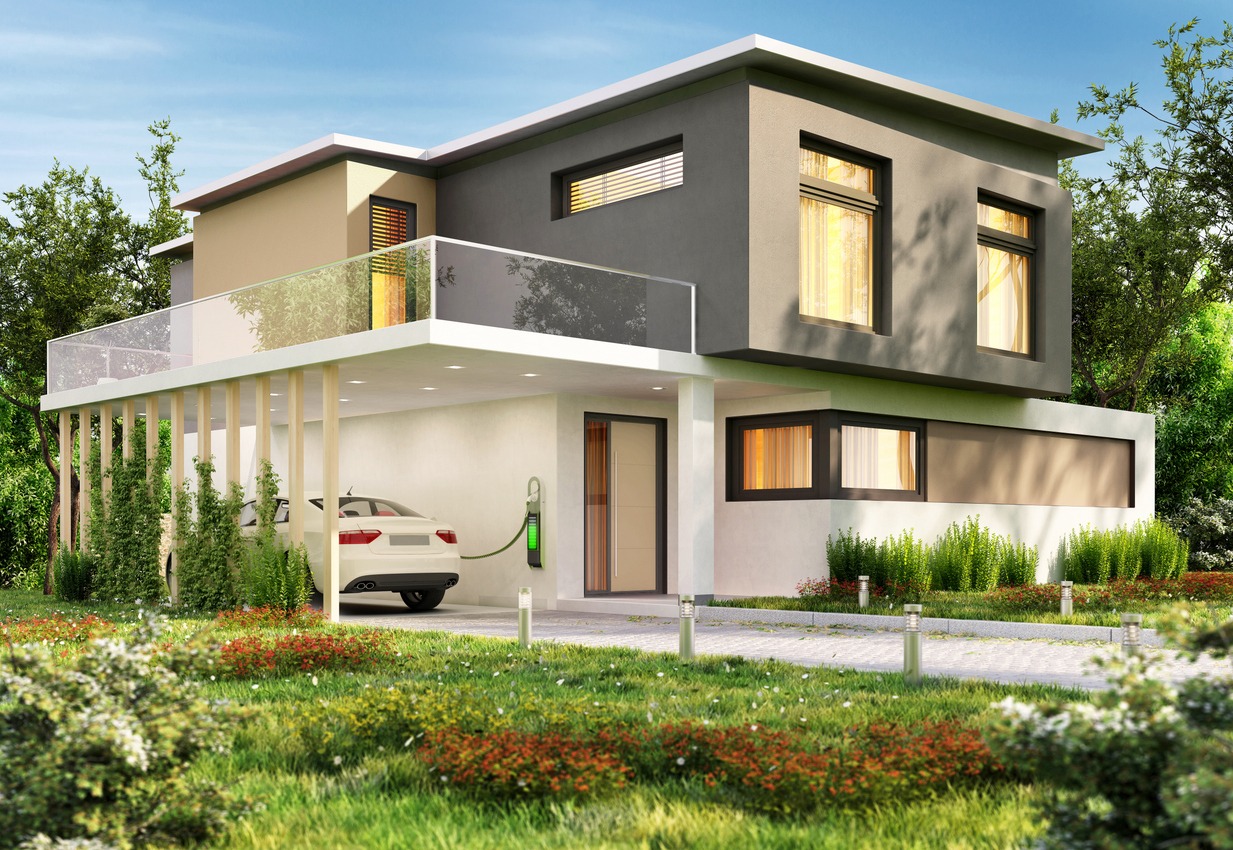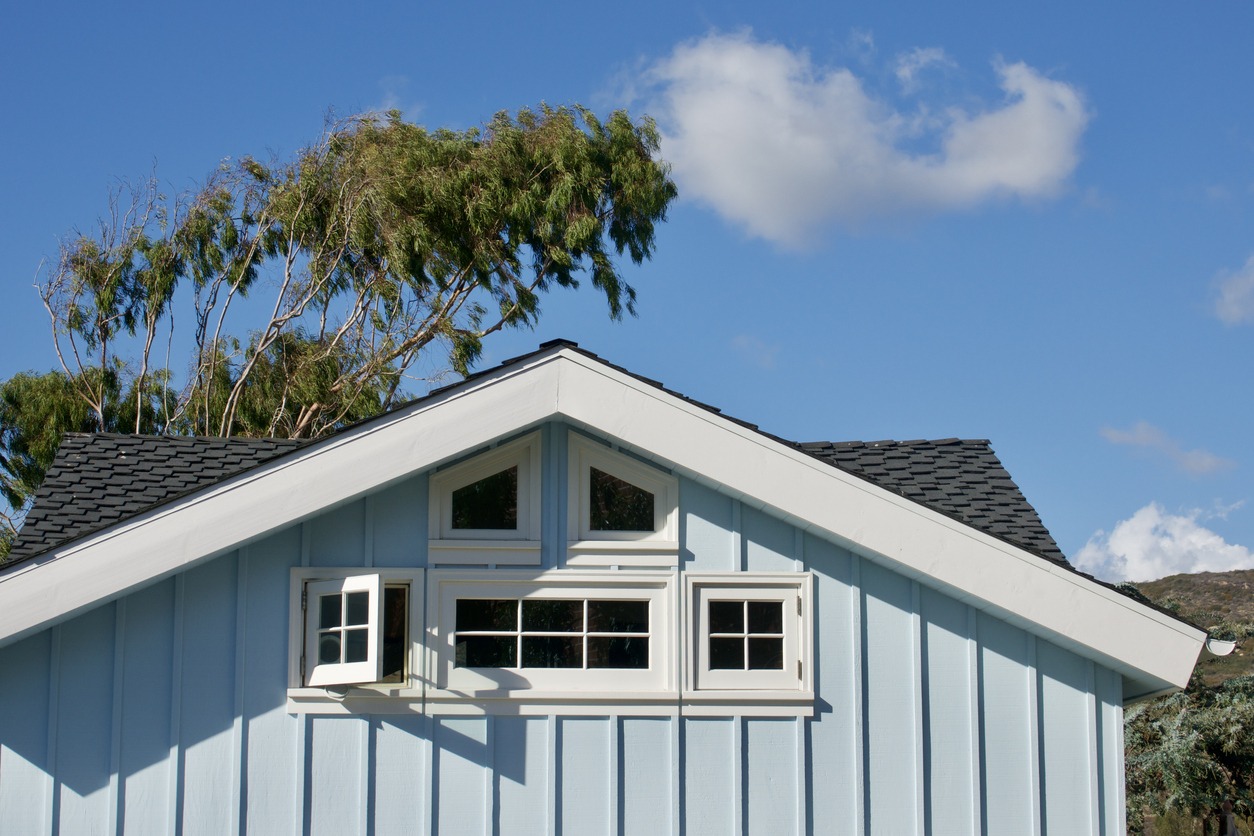A fresh coat of paint for your home’s exterior boosts its curb appeal and potentially increases its value. However, choosing a new exterior color can be overwhelming. But don’t worry – the pros at Custom Painting, Inc. have put together a helpful guide on the ideal paint colors for your home’s exterior.
Choosing the right exterior color for your home is crucial as it significantly impacts curb appeal, property value, and neighborhood harmony. A well-chosen color can enhance the aesthetic appeal, attract potential buyers, and ensure your home complements its surroundings.
Our professional painting contractor can provide valuable guidance in selecting colors that suit your home’s architecture, personal style, and local environment, ensuring a cohesive and appealing result.
Coordinate your home’s permanent features
When selecting exterior paint colors, consider your home’s permanent features to create a cohesive and harmonious look:
- Roofing: Choose exterior colors that complement your roof’s material and color. For example, with dark asphalt shingles, consider lighter, contrasting hues like soft grays or sage greens. Choose muted colors like blues or grays for a slate roof, which often has cool tones. Terracotta or tile roofs pair well with warm tones like beige, creams, or earth colors that enhance their natural hues.
- Brick or stone accents: Coordinate exterior paint colors with existing brick or stone features to avoid clashing. Use the undertones in the brick or stone as a guide—warm-toned bricks (red, brown) work well with beige, taupe, or warm grays, while cooler stones (gray, blue) look best with cool neutrals or soft blues and greens.
- Landscaping: Consider the colors in your landscaping. For lush green surroundings, neutral tones like beige, taupe, or gray can balance the vibrancy. If you have vibrant flower beds, choose exterior paint that complements those colors—muted or soft tones can enhance colorful gardens, while bold hues can create a striking contrast.
Think about your neighborhood’s color scheme
When painting your home’s exterior, it’s essential to consider your neighborhood’s overall scheme to create a cohesive and aesthetically pleasing look:
- Blend or stand out: Decide whether you want your home to blend with the neighborhood’s general color palette for a harmonious appearance or stand out with a unique yet tasteful choice. Blending can create a more uniform and serene street view while standing out with complementary colors can add character and curb appeal.
- HOA guidelines: If you live in a community with a Homeowners Association (HOA), check for any restrictions or approved color schemes. HOAs often have rules to maintain a particular look and feel for the neighborhood, and adhering to these can avoid potential fines or repainting costs.
- Historic districts: If your home is in a historic district, it’s crucial to understand the guidelines for historically accurate colors to preserve the area’s character and integrity. Selecting appropriate colors can enhance your home’s value and maintain the neighborhood’s historical significance.
Consider the effects of light and climate
When painting your home’s exterior, it’s essential to consider the effects of light and climate:
- Impact of sunlight: Sunlight can significantly alter the appearance of paint colors. Lighter tones may look washed out in direct sunlight, while darker tones, although more vibrant, can fade faster over time.
- Cooler climates: In cooler climates, warmer, inviting colors like deep reds, browns, and earthy tones can create a cozy and welcoming aesthetic, enhancing the warmth of your home’s exterior.
- Warmer climates: Lighter shades such as whites, pastels, and soft neutrals are ideal for warmer climates, as they reflect heat and help keep your home cooler while still offering a fresh, clean look.
Take into account the size and structure of your home
- Larger homes: Using neutral or softer colors for larger homes can help make expansive spaces feel more welcoming and less overwhelming. Darker accents, such as deeper shades on trim or shutters, can add depth and break up large, flat facades, creating visual interest.
- Smaller homes: Lighter or brighter colors can make smaller homes feel airier and more open. These colors reflect more light, giving the illusion of a larger space and enhancing the home’s inviting appeal.
- Using accent colors: Accent colors on doors, shutters, and trim can add character and focus to a home’s exterior. Choosing bold or contrasting colors for these elements can provide a refreshing pop without overpowering the main color, adding subtle charm and personality.
Test your color choices before committing
When choosing an exterior color for your home, testing before committing is crucial to ensuring the desired outcome:
- Sample patches: Applying paint samples to different areas of your home’s exterior allows you to see how colors appear in various lighting conditions and at varying times of the day. This step is essential, as natural light and shadows can dramatically change a color’s appearance.
- Use digital tools: Many professional contractors offer digital renderings or color visualization tools. These tools provide homeowners with a virtual preview of their home’s exterior, helping them to envision how different colors will look in the final result and make more informed decisions.
- Wait for drying: Paint colors can look different when wet versus dry. Wait for the paint to dry to see its true color. Doing so avoids surprises and ensures that the selected color complements the home’s exterior and surroundings as intended.
Trends vs. timeless colors
When choosing exterior colors for your home, balancing trending and timeless options is crucial:
Current trends
Popular exterior color trends include dark blues, muted greens, and contrasting trims. These colors add a modern and fresh appeal, creating a bold statement that stands out. However, while trends can make a home feel updated and unique, they may change over time.
Timeless choices
Opting for timeless colors such as soft grays, whites, or earth tones provides a classic and enduring look. These shades blend well with various architectural styles and usually remain visually appealing over time. Homeowners can achieve a balance by incorporating trendy colors as accents or for smaller details, like trims or doors, while keeping the main body of the house in a more classic shade.
Resale considerations
Neutral and classic colors usually appeal to a wider range of potential buyers, enhancing a home’s value and marketability during resale. These colors create a welcoming and versatile canvas, making it easier for new owners to envision their style and personal touches. Therefore, for long-term appeal and investment value, timeless colors often provide the best balance between individual expression and practical considerations.
The importance of professional guidance
When it comes to exterior painting, professional guidance is invaluable for achieving optimal results:
- Expert color consultation: A professional painting contractor provides personalized color recommendations tailored to your home’s unique architecture, location, and style. They consider lighting, landscape, and neighborhood aesthetics to suggest the best colors that enhance curb appeal and complement the overall design.
- High-quality paint selection: Professionals prioritize high-quality exterior paints that resist fading, weathering, and peeling. They guide homeowners in choosing paints formulated for specific climates and surfaces, ensuring a vibrant, long-lasting finish that withstands the elements.
- Precision and expertise: Hiring a professional painter guarantees a smooth and even application. Their skills and experience minimize imperfections, resulting in a flawless, durable finish. This not only enhances the home’s beauty but also provides long-term protection against weather damage, reducing the need for frequent repainting.
Conclusion
Before committing to your final exterior color choice, consider the following factors to ensure desirable results. These factors include your home’s architectural features, its neighborhood and surrounding landscape, climate, and personal taste.
Choosing the right exterior color enhances your home’s curb appeal and value. Consulting with a professional painting contractor can provide the expertise to select the perfect color that suits your home’s style and environment.
For expert guidance and personalized consultation on choosing the ideal exterior color, contact Custom Painting, Inc. today through our phone at 925-294-8062 or our contact page for a free estimate. Let our team of paint experts help you elevate your home’s appearance to its fullest potential.




